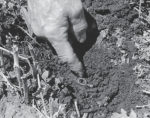Advertise Follow Us
Articles Tagged with ''University of Nebraska''
Early Soybeans Can Reap Big Rewards
This no-tiller says there are lots of reasons you should consider no-tilling soybeans earlier.
Read More
What I've Learned from No-Tilling
Strip-Tilling Boosts Yields With Colder, Heavier Soils
Yield monitor data indicates this Iowa father and son team may be able to slash nitrogen needs with corn by as much as 80 pounds per acre.
Read More
Skip-Row Planting Boosts Yields For No-Tillers, Strip-Tillers In Dry Areas
Researchers and grower find that residue retains the available moisture, while skip-row planting allows the roots to reach the water later in the season when it’s needed.
Read More
Maximize Your Phosphorus Placement
Input costs for fertilizer, an absolute necessity, can be staggering. Here’s how to ensure you get the biggest bang for your phosphorus buck.
Read More
"Sticker Shock" Is Much Less Of A Concern For Neighbors
When it comes to holding costs in line, you’ve already got an edge on neighbors who use excessive tillage.
Read More
No-Till’s Greatest Allies
If you’re wondering how earthworms might be doing in your no-tilled soils, this researcher may surprise you with his results.
Read More
Western Bean Cutworm On The Rise
This pest continues to cause serious economic damage, is moving east in the Corn Belt and may be here to stay.
Read More
What I've Learned from No-Tilling
Cash In With No-Till's "Opportunity Time"
No-till provides more time for off-farm work, to crop more acres, have more fun with the family or devote extra hours to other farm enterprises.
Read More











